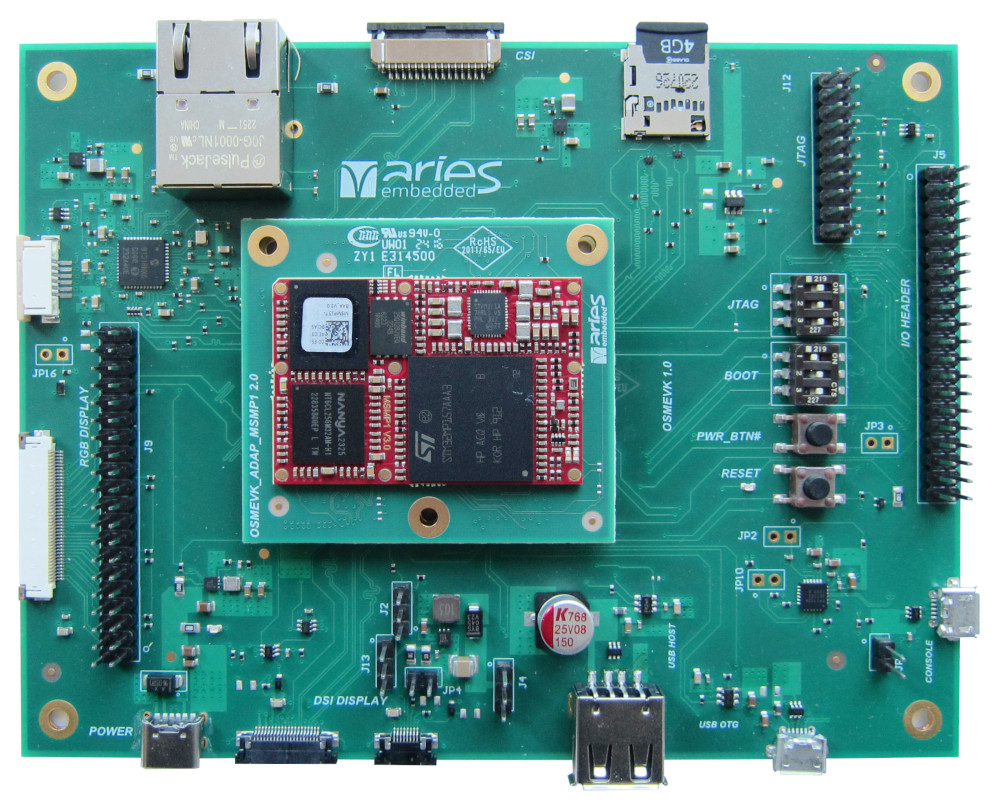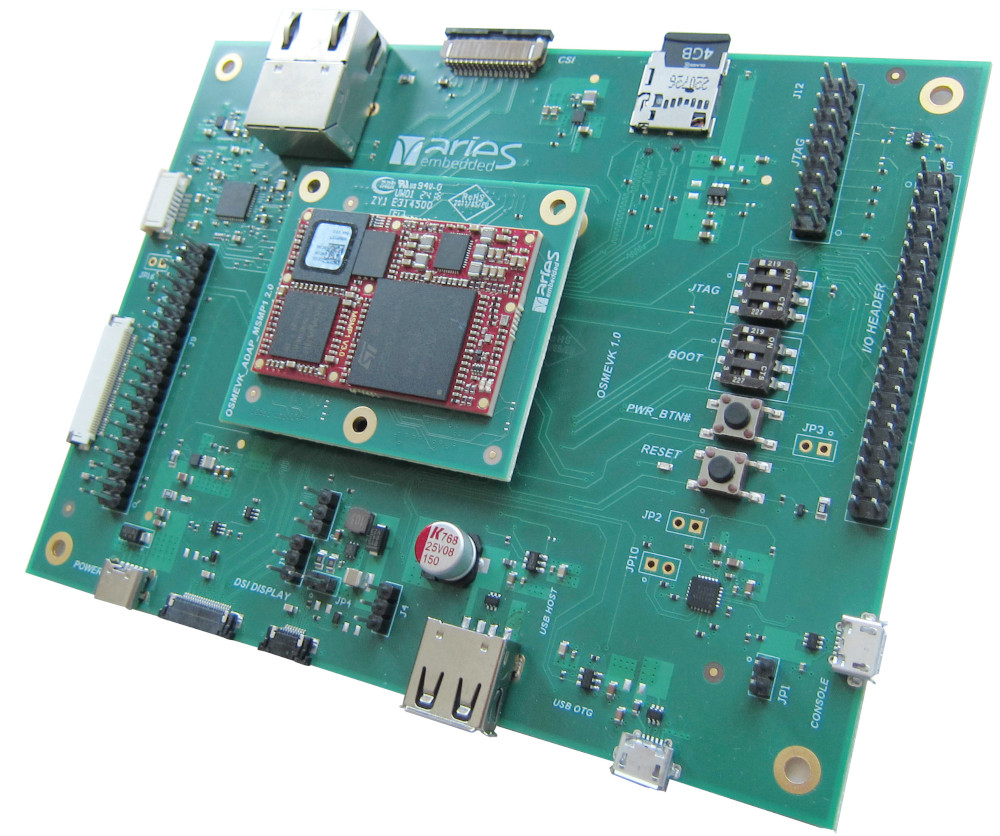MSMP1EVK - STMP1 Evaluation Kit
Easy Start and Integration of the MSMP1 SiP

The MSMP1EVK supports a quick start-up of CPU projects and can easily be used as a fast-prototype platform.
The MSMP1EVK contains the Open Standard Module compliant System-In-Package based on ST Microelectronics STMP1 Family architecture offering high-performance single/dual CortexA7 cores in combination with a CortexM4 core. The MSMP1 combines compact design and a wide range of services, bringing low power consumption, thermal efficiency and low-cost to embedded systems.
Features
- MSMP1 System on Module
- Ethernet on RJ45 connector
- USB Host on USB A connector
- USB OTG interface on USB microAB connector
- display on FPC connector or pin header
- console interface on USB microAB connector
- UART on pin header
- CAN on pin header
- SPI on pin header
- I2C on pin header
- GPIO on pin header
- JTAG on pin header
Block Diagram

Pictures



Order Codes
MSMP157EVK-BAA
- MSMP1 SiP
- STM32MP157
- 1GByte LPDDR3 RAM
- 4GB eMMC
- -25...+85°C
- Ethernet on RJ45 connector
- USB Host on USB A connector
- USB OTG interface on USB microAB connector
- display on FPC connector or pin header
- console interface on USB microAB connector
- UART on pin header
- CAN on pin header
- SPI on pin header
- I2C on pin header
- GPIO on pin header
- JTAG on pin header
The idea of all Open Standard Modules is to create a new, future proof and versatile standard for small-size, low-cost embedded computer modules, combining the following key characteristics:
- Completely machine processible during soldering, assembly and testing
- different possible packages for direct PCB soldering without connector
- Pre-defined soft- and hardware interfaces
- Open-Source in soft- and hardware
The Open Standard Module specification allows developing, producing and distributing embedded modules for the most popular MCU32, ARM and RSICV architectures. For a growing number of IoT applications this standard helps to combine the advantages of modular embedded computing with increasing requirements regarding costs, space and interfaces.